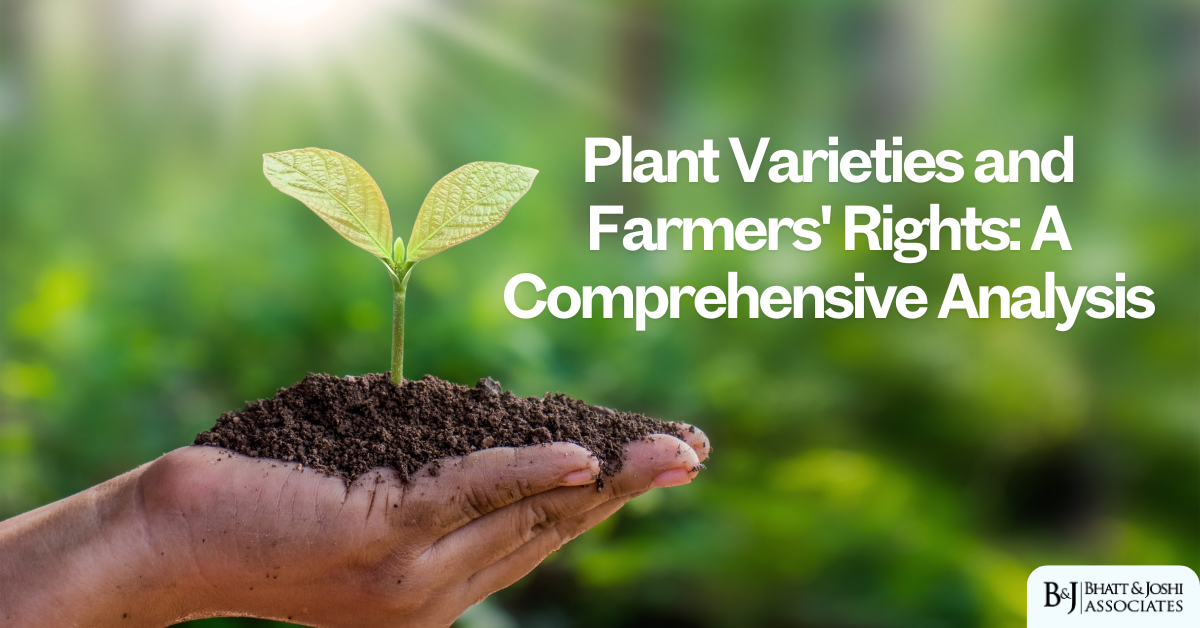Introduction
The protection of plant varieties and farmers’ rights represents a crucial intersection of agricultural innovation, intellectual property rights, and traditional farming practices. In our modern agricultural landscape, the need to balance the interests of plant breeders, who develop new varieties through scientific research and innovation, with the traditional rights of farmers who have been custodians of agricultural biodiversity for generations, has become increasingly important. The Protection of Plant Varieties and Farmers’ Rights Authority serves as a cornerstone institution in managing this delicate balance, ensuring sustainable agricultural development while protecting the interests of all stakeholders involved.
Historical Development and Global Evolution of Plant Variety Protection
Global Context
The concept of protecting plant varieties emerged in the early 20th century as agricultural practices became more sophisticated and commercialized. The International Union for the Protection of New Varieties of Plants (UPOV) was established in 1961, marking a significant milestone in the global recognition of plant breeders’ rights. This international framework has evolved through various conventions, adapting to changing agricultural needs and technological advancements. The increasing awareness of biodiversity conservation and farmers’ traditional knowledge has led to more comprehensive approaches in protecting both commercial and traditional agricultural interests.
National Development
In response to global developments and local agricultural needs, many nations began establishing their own frameworks for protecting plant varieties and farmers’ rights. India, recognizing the unique challenges faced by its agricultural sector, enacted the Protection of Plant Varieties and Farmers’ Rights Act in 2001. This groundbreaking legislation created a comprehensive framework that acknowledges both modern breeding innovations and traditional farming practices, setting a precedent for other developing nations.
The Protection of Plant Varieties and Farmers’ Rights Authority
Organizational Structure
The Protection of Plant Varieties and Farmers’ Rights Authority operates as an autonomous body established under the PPV&FR Act. The Authority consists of a chairperson appointed by the government and fifteen members representing various stakeholders in the agricultural sector. This diverse composition ensures that different perspectives and interests are represented in decision-making processes. The Authority maintains a network of branch offices across the country to facilitate easier access to its services for farmers and breeders alike.
Functions and Responsibilities
The Authority carries out numerous essential functions in protecting and promoting plant varieties and farmers’ rights. Its primary responsibilities include registration of new plant varieties, documentation of existing varieties, and establishment of systems to protect farmers’ rights. The Authority also maintains a National Register of Plant Varieties, which serves as a comprehensive database of protected varieties and their characteristics. Additionally, it conducts DUS (Distinctiveness, Uniformity, and Stability) testing of new varieties to ensure they meet the criteria for protection.
Registration and Protection of Plant Varieties
Eligibility Criteria
For a plant variety to receive protection under the Authority, it must meet specific criteria. The variety must be novel, distinct from existing varieties, uniform in its essential characteristics, and stable across generations. The Authority has established detailed guidelines for different crop species, considering their unique biological characteristics and breeding requirements. These criteria ensure that only genuinely new and valuable varieties receive protection while maintaining genetic diversity.
Registration Process
The registration process involves several steps, beginning with the submission of a detailed application including the variety’s description, breeding history, and unique characteristics. The Authority conducts thorough examinations, including field trials and laboratory tests, to verify the claims made in the application. This process typically takes several growing seasons to complete, ensuring accurate assessment of the variety’s characteristics across different environmental conditions.
Farmers’ Rights and Protections
Traditional Knowledge Protection
The Authority recognizes and protects farmers’ traditional knowledge and practices related to plant varieties. This includes acknowledging their role in conserving and improving plant genetic resources over generations. Farmers are entitled to register their traditional varieties and receive recognition for their contribution to agricultural biodiversity. The Authority maintains a special registry for farmers’ varieties, ensuring their traditional knowledge is documented and protected.
Benefit Sharing Mechanisms
One of the most innovative aspects of the Authority’s framework is the benefit-sharing mechanism. When commercial varieties developed using farmers’ varieties are registered, a portion of the benefits must be shared with the communities that originally conserved these genetic resources. This system ensures that traditional farming communities receive fair compensation for their contribution to modern plant breeding programs.
Farmers’ Privileges
The Authority safeguards several crucial farmers’ rights, including the right to save, use, sow, re-sow, exchange, and share farm-produced seeds. These privileges are essential for maintaining traditional farming practices and ensuring food security at the local level. Farmers are also protected from unintentional infringement of plant variety protection and are entitled to seek compensation for underperforming varieties.
Implementation and Enforcement
Monitoring and Compliance
The Authority maintains robust systems for monitoring compliance with plant variety protection regulations. This includes regular inspections, verification of breeding records, and investigation of complaints regarding infringement of protected varieties. The Authority also works closely with agricultural universities and research institutions to maintain the integrity of the protection system.
Dispute Resolution
A specialized tribunal handles disputes related to plant varieties and farmers’ rights. This tribunal provides an accessible and efficient mechanism for resolving conflicts between different stakeholders. The process is designed to be farmer-friendly, with provisions for legal aid and simplified procedures to ensure that resource-poor farmers can effectively defend their rights.
International Cooperation and Harmonization
Bilateral and Multilateral Agreements
The Authority actively participates in international cooperation through bilateral and multilateral agreements with similar organizations worldwide. These partnerships facilitate the exchange of technical knowledge, harmonization of protection standards, and mutual recognition of plant variety rights. Such cooperation is crucial for addressing global challenges in agriculture and promoting innovation in plant breeding.
Technology Transfer and Capacity Building
International cooperation extends to technology transfer and capacity building programs. The Authority organizes training programs, workshops, and knowledge exchange initiatives with international partners. These activities help in building technical expertise, improving testing facilities, and implementing best practices in plant variety protection.
Challenges and Future Directions of of Plant Variety Protection
Current Challenges
Despite significant achievements, the Authority faces several challenges. These include managing the increasing complexity of plant breeding technologies, addressing climate change impacts on agriculture, and ensuring effective implementation of benefit-sharing mechanisms. The Authority must also balance the interests of commercial breeding companies with those of small farmers and traditional communities.
Future Prospects
Looking ahead, the Authority is focusing on strengthening its technological infrastructure, expanding its testing capabilities, and improving accessibility of its services. There are plans to integrate modern technologies like DNA fingerprinting and digital documentation systems to enhance the efficiency of variety protection. The Authority is also working on developing more comprehensive guidelines for emerging breeding technologies and their implications for farmers’ rights.
Conclusion: Advancing Agricultural Innovation and Protecting Farmers’ Right
The Protection of Plant Varieties and Farmers’ Rights Authority represents a pioneering approach to balancing modern agricultural innovation with traditional farming rights. Its comprehensive framework for protecting both plant breeders’ and farmers’ rights has become a model for other nations. As agriculture continues to evolve with new technologies and challenges, the Authority’s role in ensuring sustainable and equitable agricultural development becomes increasingly important. The success of this system demonstrates that it is possible to promote agricultural innovation while protecting the rights and interests of traditional farming communities.














